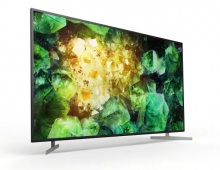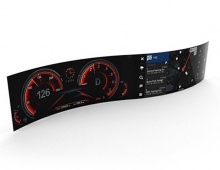
Slimmer tube TVs to challenge flat panels
New television-tube technology promises to shed several inches from the bulky displays and challenge rival flat panels at their own game--being thin.
Executives at a display conference here said Thursday that significantly thinner CRT (cathode ray tube) displays will be available next year and are expected to be less expensive than trendy flat panels that use newer technologies such as LCD--liquid crystal display--and plasma displays.
"These superslim CRTs offer the best of both worlds--superior picture quality with a slim size," said Siegfried Trinker, director of corporate strategy at LG.Philips Displays International.
Despite offering a better picture quality and lower prices, and despite making up a large majority of the market, tube-based televisions have lost their luster compared with flat-panel sets using emerging technologies such as LCDs and plasma.
LG.Philips Displays is already making the tubes for the thin models in limited quantities and expects thin CRT televisions to be available in the United States starting in late 2005. The sets will initially be slightly more expensive than current CRT models, but prices should come down quickly.
The first of the manufacturers to offer the sets in the United States will be the joint venture's parents, LG Electronics and Royal Philips Electronics. The two electronics giants also teamed to form LG.Philips LCD, the second biggest manufacturer in the LCD market.
A 30-inch-tube television from Samsung Electronics will be about 16 inches thick, deeper than a flat panel set but about the same size as the typical stand on a flat-panel television, a Samsung executive said.
CRTs make up about 90 percent of the worldwide television market, but growth rates have been stable for some time. In fact, many companies that built their successes on CRT televisions are pulling back from the market and dedicating themselves to flat-screen sets. Shipments for flat televisions are up modestly, making up 5 percent of the market. But their hefty profits margins are driving interest.
Executives acknowledged that the CRT business is out of its growth phase but there are still opportunities as the market consolidates.
LG.Philips supplies the CRTs for tube sets and executives there said slimmer is better for the market.
New flat-panel televisions have captured the attention of consumers because of their thin profiles and large screen sizes. However, television manufacturing executives at the Flat Information Displays Conference 2004 said that starting next year, superslim tube models will hit the market at significantly lower prices than flat panels.
The move to thinner CRTs is meant to attract consumers who want a thin television but find current flat panels too expensive.
Samsung Electronics will also offer superslim CRT sets next year, according to Jim Sanduski, vice president of Samsung Electronics America's marketing visual display product group. During the first quarter of next year, the company will begin selling a 30-inch television in Korea. Sets will come to the United States by the middle of next year.
"These sets will prolong the appeal of tube-based televisions," said Sanduski.
Despite the growth of flat-panel televisions based on new technologies such as LCD and plasma, CRT is still expected to dominate the market in the years to come.
"CRTs are not going away anytime soon," said Riddhi Patel, an analyst with researcher iSuppli. "They will account for 70 percent of the market in 2008."
CRTs makers also benefit from lower prices. Flat panels tend to carry a heavier premium than CRTs for a number of reasons. They come in larger sizes--television maker Syntax, a second-tier maker, said at the conference that it will begin selling a 55-inch LCD-based television by May of next year. Flat panels are a relatively young market compared to the mature CRT industry, but prices are already dropping.
A build-up of LCD panel inventory is leading to excess supply and price cuts. Manufacturers are already driving prices down, leading some analysts to think this holiday season could be a good one for flat-panel buyers and a tough one for manufacturers.
However, it will be some time before enough price cuts for flat-panel sets have been made to match CRTs.
Average prices for CRTs are expected to fall as the market consolidates and survivors are forced to be profitable at low price points, according to Trinker. Many major players in the CRT business, including Sony, Toshiba, Matsushita and Sharp, have pulled back their efforts.
Trinker added that televisions are headed for prices less than $500, with average tags in the $250 range. To offset low prices, volumes will have to be high, and that might be difficult as flat panels evolve into a larger part of the overall television market.
The share of worldwide TV shipments that are LCD models will grow from 5 percent this year to 18 percent in 2008, according to iSuppli. The total TV market is expected to jump from about 168 million units to roughly 203 million units during that period.
Flat-panel televisions are becoming a larger part of the LCD market as well. This year, revenue from flat-panel desktop monitors will account for 41 percent of the overall market, and notebooks will account for 22 percent, according to DisplaySearch. LCD-based televisions will account for 11 percent. By 2008, revenue from desktop monitors will make up only 31 percent and notebooks, 16 percent. LCD televisions will provide 33 percent of the market, DisplaySearch forecasts.
Also helping the flat-panel television market will be the transition from analog to digital television. The transition is being pushed by a confluence of forces, including a long-standing federal mandate to shift over-the-air TV broadcasts from analog to digital signals; improvements and lower prices in display and digital storage technologies; heated competition between satellite and cable TV providers; and Hollywood's growing acceptance of the digital evolution.
From Newx.com




















